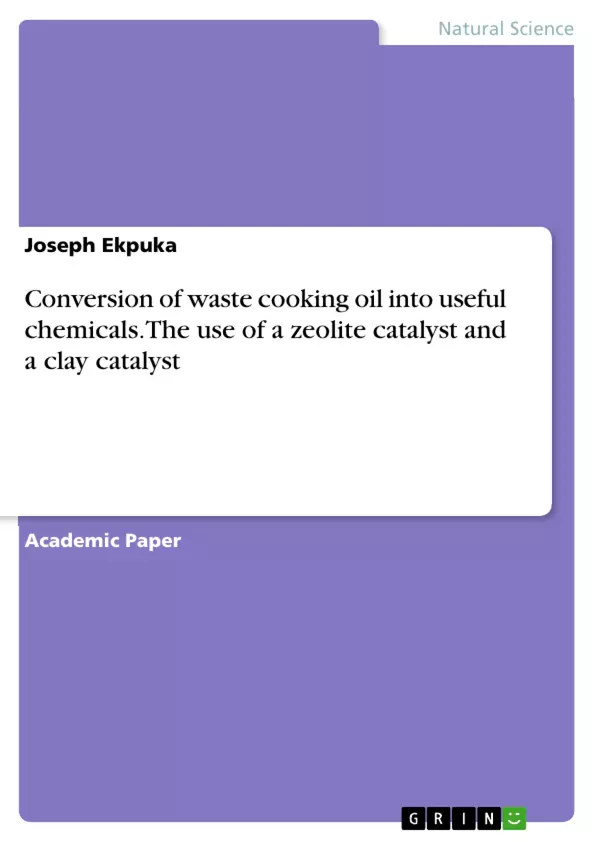Biodiesel or in general biofuels can be produced in a complex process of transesterification or in hydrotreatment of oil. To do this a catalyst is required. The conversion process of used oil is the aim of this paper. The information presented forward offers a deep insight of products that are obtainable from the conversion of waste cooking oil.
Waste Cooking Oil (WCO) refers to used vegetable oil generated during food preparation. While WCO is cost-effective, improper disposal leads to environmental and soil degradation. To mitigate these effects, WCO can be repurposed as a feedstock for biofuel production.
Biofuel, specifically Fatty Acid Methyl Ester (FAME), is derived through a transesterification reaction between triglycerides in the oil and alcohol. This reaction utilizes 1:1 group clay minerals as a catalyst, with a predominant focus on kaolinite. Kaolinite serves as either the catalyst support or a precursor for other ceramic material catalysts, including Zeolites.
Transesterification of WCO into Fatty Acid Methyl Ester requires the use of a catalyst. While it's possible to perform this conversion at high temperatures and pressures without a catalyst, it often results in a significant presence of fatty acids in the final product. Therefore, solid acid catalysts are preferred for biofuel synthesis.
Inhaltsverzeichnis (Table of Contents)
- Introduction
- Catalyst Identification:
- Waste Cooking Oil (WCO): Characterization
- Transesterification Reaction Mechanism...
- Literature: Biofuel Synthesis
- Biofuels from Waste Cooking Oil Using Zeolite/Clay Catalyst.
- The Synthesis........
- Catalyst Characterization: Zeolite or Clay..
- Product Characterization..
- Conclusion.
- References.
Zielsetzung und Themenschwerpunkte (Objectives and Key Themes)
The paper aims to investigate the use of zeolite and clay catalysts in the conversion of waste cooking oil into useful chemicals, particularly biodiesel. It explores the transesterification process and its potential for producing biofuels from this readily available waste product.
- Conversion of waste cooking oil into useful chemicals
- Use of zeolite and clay catalysts
- Transesterification process
- Production of biodiesel
- Environmental benefits of utilizing waste cooking oil
Zusammenfassung der Kapitel (Chapter Summaries)
The introduction presents the context of waste cooking oil and its potential for producing biofuel. It discusses the transesterification reaction and the role of catalysts in this process. The chapter on waste cooking oil characterization focuses on its properties and potential for use as a feedstock for biodiesel production. The chapter on literature review explores previous research on biofuel synthesis using various catalysts. The chapter on biofuels from waste cooking oil using zeolite/clay catalysts delves into the synthesis process, catalyst characterization, and product characterization.
Schlüsselwörter (Keywords)
The paper focuses on the key concepts of waste cooking oil, vegetable oil, zeolite, clay catalysts, transesterification, biodiesel, biofuel synthesis, and environmental sustainability. The research also explores the utilization of readily available and cost-effective materials, particularly zeolite and clay, as catalysts for the conversion process.
- Quote paper
- Joseph Ekpuka (Author), 2020, Conversion of waste cooking oil into useful chemicals. The use of a zeolite catalyst and a clay catalyst, Munich, GRIN Verlag, https://www.grin.com/document/519978



